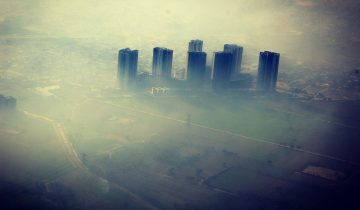Babri Masjid: Not Just an Issue, The Other Face of Indian Society

Politics, pride, and people; Babri Masjid, just an another case to satisfy commitment; flexible, towards religion
Babri Masjid; this name needs no introduction, a case risen up from religious sentiments to pride; individual, societal and political, is once again ready to be served before the Supreme Court, hearing scheduled from December 5 onwards. Shia Waqf Board of Uttar Pradesh recently suggested that the Supreme Court should build a Mosque in the Muslim-dominated area at a considerable distance away from the disputed site of ‘Ram Janm Bhumi’, Ayodhya.
History at a Glance
Ramayana (the holy text of Hindus) states that Ayodhya is the birth place of Lord Rama, therefore, Hindus urge that the disputed land should be converted into a temple. For Muslims, it is a completely different story. According to an inscription, the mosque was built in 1528 by Mir Baqi, the commander of Mughal emperor, Babur. Some folk believes that the mosque was built by demolishing a temple built at this place.
Amidst the fall of the Mughal Empire and the rise of British rule, the land remained unnoticed for about 356 years. The first case was filed on 19 January 1885 in one of the courts of Faizabad, Uttar Pradesh to build a temple nearby the disputed land, but the application was turned down since the temple would then be very close to the ‘Ram Janm Bhoomi’(disputed land). Since then many petitions have been filed, but the court could not reach on any solution.
On 25th September 1990, the then BJP president L.K. Advani organised ‘Ram Rath Yatra’ which started from Somnath, Gujrat and was supposed to reach Ayodhya on 30th October 1990. On 23rd October 1990, L.K. Advani was arrested from Bihar, before the completion of the Rath Yatra. In the year 1991, Kalyan Singh, the then Chief Minister of Uttar Pradesh seized 2.77 Acre of the disputed land.
On 30th October 1992, Vishva Hindu Parishad decided to start ‘Kar Seva’ in Ayodhya which was scheduled for 6th December 1992. Till 5 December 1992, around 2.5 Lakh Kar Sevak reached Ayodhya and on 6th December 1992, the estimated number was 5 lakh. In around 3 hours the three domes of the mosque were demolished.
The Allahabad high court in 2003 ordered the Archaeological Survey of India (ASI) , to survey the disputed land and submit a report of the traces of whichever religion found. In August, ASI handed a report of 574 pages to the court. On 30th September 2010, the Allahabad court took the revolutionary decision regarding the disputed 2.77-acre land. The 2.77-acre land was divided into three parts by the Allahabad court; the first part was given to Hindu Maha Sabha, the second part which contains ‘Sita Rasoi and Ram Chabutra’ was given to the Nirmohi Akhara and the third part to Islamic Sunni Waqf Board.
The Truth Behind Kar Seva
Till date, the truth behind the demolition of Babri Masjid is a mystery. The former UP Shiv Sena, president, Pawan Kumar Pandey, revealed that the Kar Seva was planned carefully. Some of the investigative agencies also agree with the notion that the Kar Seva was a strategy. The Kar Sevak’s were given training to demolish the structure. Senior leaders like L.K. Advani, Uma Bharti, Kalyan Singh knew about the plan.
BJP and Vishva Hindu Parishad have been giving it the name of a riot by angry crowd, but sting operations have a different story to say. It is being claimed that the plan was being worked upon from the year 1990. The Kar Sevak’s were given training from 1991 to 1992 in Madhya Pradesh, Maharashtra and mainly in Uttar Pradesh. Behind the Kamadgiri Mountain in Chitrakoot, Uttar Pradesh, the Kar Sevak’s were given the training to climb structures as big as the domes and were skilled to cut stones.
In a charge sheet by CBI, it was clearly mentioned that L. K. Advani was the main culprit in the demolition case.
The Other Face
There have been continuous hearings by the supreme court in Babri Majid case, but we still don’t have a solution.
The main culprit is the political arena of India hiding behind the religious riots of Hindus and Muslims. But are we not responsible for giving them this opportunity? On one face we feel it is our pride to support issues involving religion and on the other, we don’t even respect our very own religion; the former is just for publicity and extrinsic satisfaction while the latter is what we have inside. Do we even respect the God for whom we have been fighting for?
Politics is a fickle mistress sustaining due to the negligence of people. May it be the Blue Star Operation, Emergency or Babri Masjid, politics finds its way to be benefited, mocking people around.
Killing or destruction can never be an homage to our religion.
The Babri Masjid case is one of the most mysterious cases of the country in which politics used people’s pride and emotions to fulfil its motto. Some say that the demolition was because of the then-upcoming elections.
Whatever the reason may be, we will have to wisely decide on the genuine and the fake.




